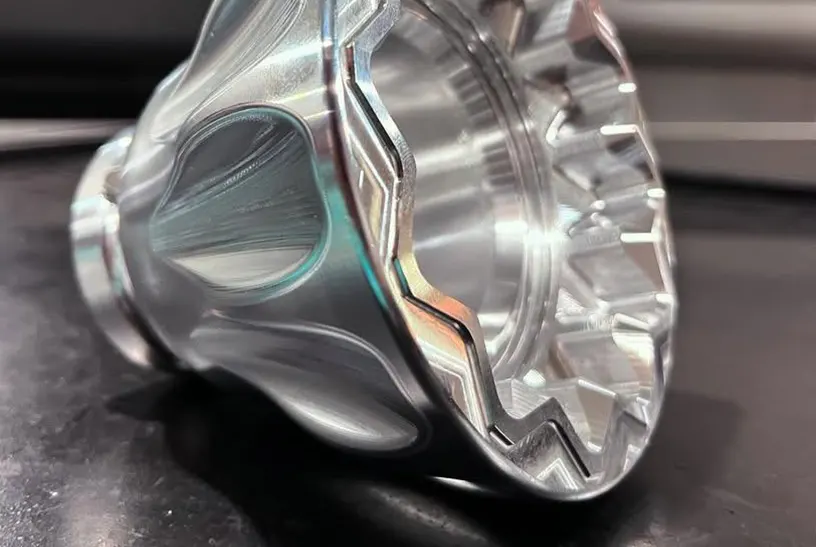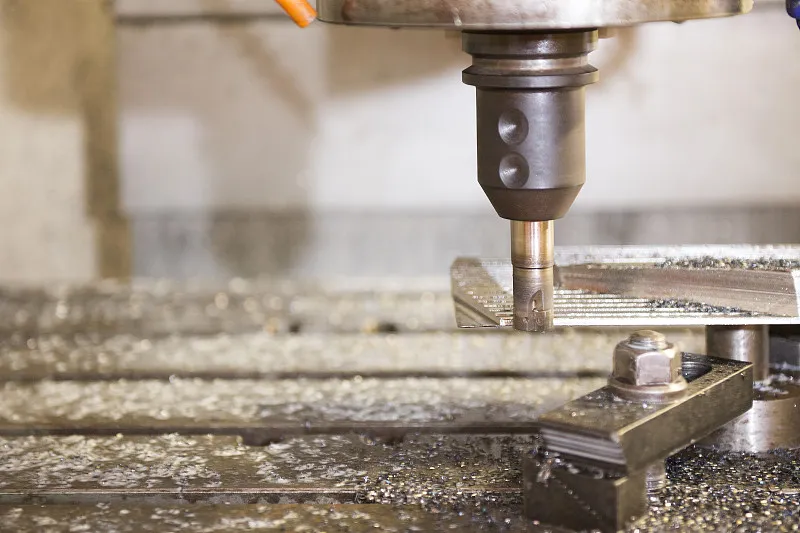With the rapid progress of information and industrial technology, mechanized production technology has been effectively enhanced.
This advancement, especially in automotive parts machining, has been widely used to promote a rapid increase in productivity.
Automobile manufacturing enterprises need to improve the level of mechanization to reduce costs and improve efficiency.
This should be done by continuously introducing new technologies to promote mechanical automation and ensure its competitiveness.
The accuracy of automotive parts requires effective precision control technology.

Necessity of automotive parts machining precision control
In the automobile manufacturing process, the machining accuracy of parts directly affects the quality and performance of the vehicle.
Precision control ensures the product meets strict size, shape, and surface quality requirements.
This need is becoming even more prominent in modern automobile production, where parts design is increasingly complex and performance requirements are higher.
As far as safety is concerned, the precision control of automotive parts directly affects the safety of the whole vehicle.
Precision deviation may cause poor fit of parts, which in turn affects their strength, stiffness, and stability, creating a safety hazard.
For example, the machining accuracy error of engine parts is directly related to the operating efficiency and durability of the engine.
In serious cases, this can lead to failures or accidents.
Precise control helps to eliminate the safety hazards caused by machining errors, to ensure safe driving.
Analyzed from the perspective of production efficiency and cost investment, good or bad precision control directly affects the production process. It determines the rates of scrap and rework.
Adjusting machining parameters and rework can reduce the scrap rate and shorten the production time, which can be achieved with the use of high-precision machining technology.
At the same time, precision control can shorten the production cycle, improve the level of automation, and increase the flexibility of the production line.
This leads to improved production efficiency while effectively reducing costs.
Therefore, precision control is not only a requirement to improve product quality, but also a key factor to optimize the production process and improve overall economic efficiency.
From the perspective of technological innovation and industrial upgrading, the popularization of intelligent manufacturing and high-precision equipment is accelerating.
As a result, precision control has become an inevitable trend.
This trend is driving the technological upgrading of the automotive industry.
In increasingly fierce competition in the global market, automobile manufacturers are driven to innovate in precision control technology.
Through these innovations, they can improve the processing level of parts.
This enables them to provide more competitive products, thereby promoting technological progress in the high-precision and high-performance aspects of the entire automobile industry.
Factors affecting the machining accuracy of automotive parts
A variety of factors jointly affect the level of machining accuracy of automotive parts.
These factors include, but are not limited to, material properties, equipment performance, process parameters, and environmental conditions.
These factors are interrelated and contribute to the final quality of parts processing.
Material properties are the basic factors affecting machining accuracy.
Various physical and chemical properties of the material will produce different effects on the processing of thermal expansion, cutting strength, and hardness.
For example, the different deformation characteristics of aluminum alloy and steel in the cutting process will lead to different stress levels in the machining process.
At the same time, the uniformity and stability of the material significantly affect the magnitude of deformation and error.
These factors can further influence the parts’ size and shape accuracy.
The accuracy and stability of the machining equipment is critical to the machining accuracy of the parts.
The rigidity of the machine tool, the rotary accuracy of the spindle, and the holding accuracy of the tool are all critical factors.
These elements, along with the tool’s dynamic responsiveness, directly affect the generation and transfer of machining process errors.
High-precision CNC machine tools can maintain machining stability under high loads and reduce dimensional fluctuations caused by equipment errors.

On the contrary, equipment aging, precision degradation, or the lack of necessary calibration and maintenance may trigger machining accuracy problems.
The selection of machining process parameters is also an important factor in determining machining accuracy.
Setting cutting speed, feed rate, depth of cut, and other parameters is essential in the machining process.
These settings significantly influence the distribution of thermal deformation, vibration, and cutting force during machining.
Unreasonable process parameters not only lead to excessive tool wear, but also may trigger thermal expansion of the workpiece, resulting in dimensional deviation.
Reasonable selection of process parameters, especially in multi-process machining parameter optimization, helps improve part machining accuracy.
The impact of environmental factors on machining accuracy should not be ignored.
During the machining process, factors such as the temperature of the machine tool and humidity, along with other external environmental conditions, can cause thermal deformation.
This leads to expansion and contraction of the parts, which in turn affects machining accuracy.
Temperature fluctuations can lead to changes in machine materials and workpiece dimensions, affecting the stability of machining results.
Controlling the temperature and humidity of the machining shop is essential for precision control.
Keeping the temperature of the equipment and workpiece stable further improves the overall precision level.
Automotive parts machining precision control technology
In the machining of automotive parts, precision control technology is becoming increasingly important.
With the continuous improvement of manufacturing needs, it is showing a trend toward greater complexity and refinement.
The following are several effective precision control technologies that aim to solve the problem of precision fluctuations in the current machining process.
Real-time error compensation technology
Real-time error compensation technology is increasingly used in automotive parts machining applications.
It monitors and corrects real-time errors during the machining process, using high-precision sensors and feedback control systems.
Such technical tools are generally composed of position sensors, temperature sensors, strain sensors, and other components, which can track the condition of the workpiece and tool in real time.
This allows the system to obtain processing error data, enabling the CNC system to implement real-time adjustments.
Specifically, the sensor in the machining process records data such as dimensional changes in the workpiece, tool wear, and thermal deformation of the machine tool.
Based on this feedback data, the CNC system can independently adjust the tool feed rate, path, and cutting force, thus realizing the immediate correction of errors.
This technology can stabilize the machining process and reduce the degree of manual intervention, all while ensuring machining accuracy.
It is particularly suitable for high-precision, high-volume automotive parts processing.
With the continuous progress of sensor technology and the enhancement of computing power, real-time error compensation technology continues to advance.
It is expected further to improve the flexibility and intelligence of precision control.
This will allow it to better adapt to more complex and dynamic machining environments.
Adaptive control system
As a dynamically adjusted control technology, the adaptive control system plays a vital role in machining.
Its core principle is based on real-time feedback data. The system automatically adjusts machining parameters—such as feed rate, depth of cut, and cutting force—to maintain consistent machining accuracy.
Different from traditional preset machining parameters, the adaptive control system continuously monitors changes in the machining process in real time.
It achieves this by using cutting force sensors, vibration sensors, and other equipment.
Unlike traditional preset machining parameters, the adaptive control system continuously monitors changes in the machining process in real time.
It uses cutting force sensors, vibration sensors, and other equipment.
It then dynamically adjusts the control parameters based on the monitored change information.
When machining errors occur, such as tool wear or changes in cutting force, the system automatically corrects them based on the preset algorithm.
This ensures that the machining accuracy is not affected by environmental or equipment changes.
In specific applications, the adaptive control system can identify abnormal signals generated during the cutting process.
It then optimizes the machining path and reduces energy loss through algorithms within the system.
In recent years, machine tool control technology and sensor accuracy have improved significantly.
As a result, the accuracy and response speed of adaptive control systems have also improved substantially.
As a result, these systems are now more widely used in the processing of high-precision automotive parts.
Micro-machining and ultra-precision machining technology
Microscopic and ultra-precision machining technology represents the forefront of current machining accuracy control.
Microscopic machining technology, using nano-scale tools and microfabrication equipment, can accurately control the removal process of material at the microscopic scale.
This enables machining with almost zero error, making it especially suitable for producing parts with high-precision requirements.
Ultra-precision machining technology uses optical, electron beam, ion beam, and other non-traditional machining means, such as laser machining and electron beam machining.
These technologies allow microfabrication operations to be carried out without thermal effects.
This helps reduce errors caused by thermal expansion or uneven cutting forces in traditional machining.
These advanced machining methods can precisely manufacture parts with microstructures and high surface quality.
For example, these technologies are often used to machine high-precision parts such as engine core components and precision gears.
Micromachining and ultra-precision machining technologies are especially useful in cases where extremely high surface quality is required.
These methods can reduce material waste and improve machining efficiency while still ensuring accuracy.
With the continuous progress of material science and processing equipment, these technologies will play an increasingly important role in the precision control of automotive parts.
Conclusion
Real-time error compensation, adaptive control, and micromachining and ultra-precision machining technology have become the core technical means of improving precision control.
With the progress of big data, artificial intelligence and intelligent manufacturing technology, precision control technology will continue to develop and tend to be more intelligent and precise.
In the future, the automotive industry needs to strengthen its research and application of precision control technology.
This will help improve the overall manufacturing level and adapt to increasingly complex market demands and competitive pressure.


